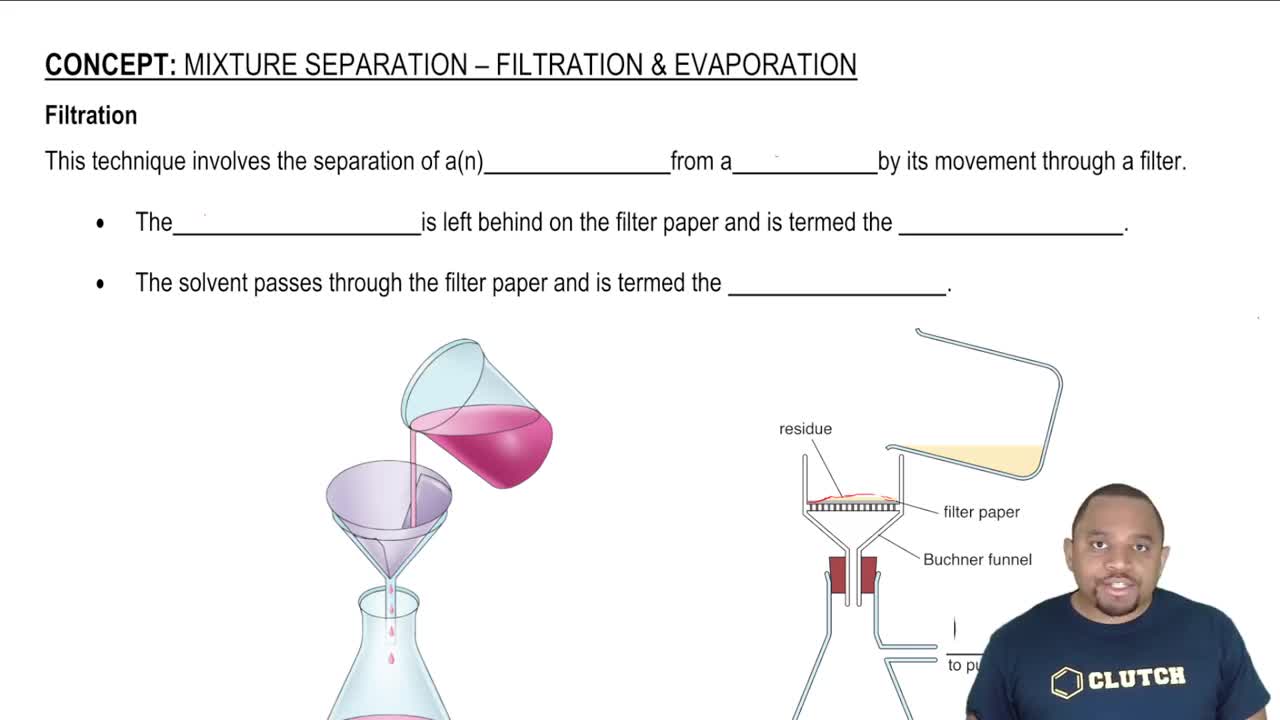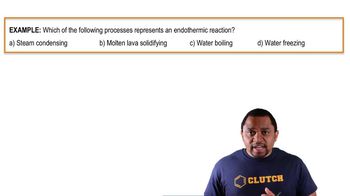Here are the essential concepts you must grasp in order to answer the question correctly.
Evaporation
Evaporation is the phase transition from liquid to gas that occurs at the surface of a liquid. It happens when molecules at the surface gain enough energy to overcome intermolecular forces and escape into the air. This process is typically endothermic, as it requires heat energy from the surroundings to provide the necessary energy for the molecules to transition into the gas phase.
Recommended video:
Filtration and Evaporation
Endothermic Processes
Endothermic processes are chemical or physical changes that absorb heat from their surroundings. In the case of evaporation, the liquid absorbs heat energy, which leads to a decrease in temperature of the remaining liquid. This is why evaporation can cool the surface of the liquid, making it feel cooler to the touch.
Recommended video:
Endothermic & Exothermic Reactions Example 1
Intermolecular Forces
Intermolecular forces are the attractive forces between molecules that influence their physical properties, including boiling and melting points. In liquids, these forces must be overcome for molecules to escape into the gas phase during evaporation. The strength of these forces determines how easily a liquid can evaporate; weaker forces lead to faster evaporation rates.
Recommended video:
Intermolecular vs Intramolecular Forces




